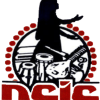The celebration of light over darkness known as Divali has been given greater significance during the last twenty-five because of the
perseverance and determination of the members of the National Council of Indian Culture who have been devoting much time and effort
in the promotion of Indian Culture that has culminated in the establishment of the Divali Nagar. The period of activities leading up to the
actual day of celebration gives an opportunity to many artists both locally and internationally to showcase their talent and as a consequence
the members of the NCIC holds Divali Nagar very dearly to their hearts.
It was February 1986, one week after the annual grand celebration of the national festival of Carnival in Trinidad and Tobago. A meeting
was carded to take place at the Barataria office of the travel agency, Amral’s Travel Service, by its owner, the then President of the National
Council of Indian Culture (NCIC), Mr. Hans Hanoomansingh. For several years this office had served as a meeting place for the members of
the council in carrying out its mandate to propagate and promote Indian Culture with reference to the Indian Diaspora in Trinidad and
Tobago. The agenda of this meeting was no different to those held previously, as it focused on developing strategies for the promotion of
Indian Culture, and implementation of plans for execution.
However, on that particular day there was an air of extreme anticipation, as members of the council, under the advice of the President of the
Council, had invited prominent individuals, who for many years were at the forefront of the promotion of Indian Culture. These
individuals were hand-selected by the NCIC executive to be privy to the unveiling of a master plan to bring together the peoples of the
Indian Diaspora in T&T in a united effort to promote Indian Culture. The air of expectancy was reminiscent of a similar event, 22 years
prior, when on the 19th of July 1964 the founders of the NCIC, Bisram Gopie and Narsaloo Raamaya, had organized a meeting with over a
hundred activists of Indian Culture at the Gandhi-Tagore College in San Fernando to announce the formation of this very same council
designated back then as the National Council of Indian Music and Drama.
All assembled on that fateful day, Monday February 17, 1986 at Amral’s Travel Service, waited with baited breath to hear the vision that was
the brainchild of Mr. Hanoomansingh. It was hinted that its focus would be on the development and implementation of a strategy for a
national, and presumably, international focus on Divali, the Hindu Festival of Lights. This ancient and spiritually ennobling festival was
brought to T&T since the period of East Indian Indentureship and is being celebrated to the present day in this twin island Republic. It
received national recognition from 1966 as it was declared a national holiday, two years after the NCIC itself was established. However, like
most aspects of the culture of the Indian Diaspora, Divali was not viewed as a significant part of the culture of T&T, despite the fact that
almost half of the nation’s population was of East Indian descent. At that meeting in 1986 Mr. Hanoomansingh recalled that while as a
participant attending a series of seminars on invitation by the US Government, on international management, during brief session at the
state department, his eyes caught a very impressive poster headlined, “The African Diaspora in the Caribbean.” Indeed, he thought that its
focus was valid and important but one question was burning in his mind and he felt compelled at ask it. “But what of the Indian presence in
the Caribbean?” he inquired. Blank stares greeted him by state department officials. He continued, “With your active political involvement
in Guyana and your intelligence activities in Suriname and Trinidad, you must know of the substantial Indian population in the region.” The officials conceded that they had never considered the point

Mailing Address:
28-38 Narsaloo Ramaya Marg Road Endeavour,
Chaguanas 502128 Trinidad, West Indies
1(868) 789-9101
1 (868) 381-1069